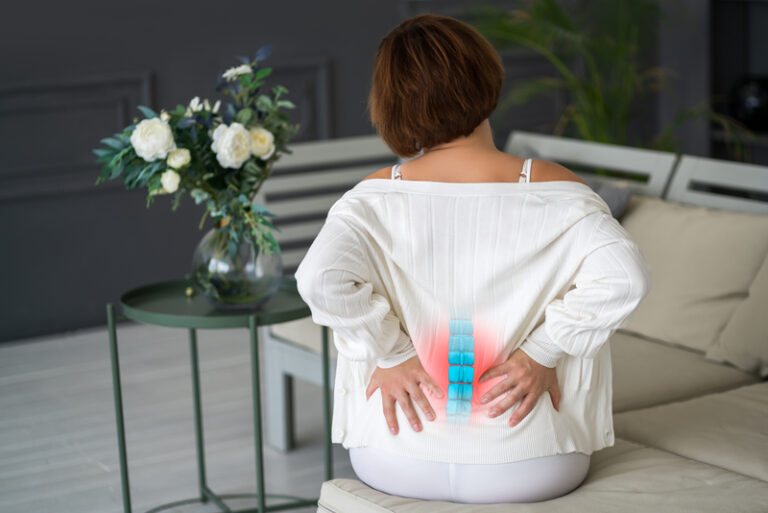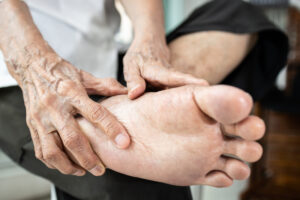Like wrinkles and gray hair, disc degeneration is considered a normal part of aging. In fact, degenerative disc disease (DDD) is not really a specific disease, but a term used to describe the inevitable and progressive changes our spinal discs encounter as we age. Research shows that one third of people aged forty to fifty-nine years old have image-based evidence of moderate to severe DDD, and the prevalence increases two to four-fold in those aged sixty and older.
Many people with DDD never experience symptoms. Of those who do, the most common complaints include back pain, especially neck and low back that may radiate into the leg and foot. Symptoms tend to appear due to spinal instability, nerve root compression, and/or muscle tension in the spine, and may be worsened by daily activities, such as sitting, walking, twisting or bending. DDD may eventually lead to weakened muscles and decreased mobility. That said, obesity, a sedentary lifestyle, and traumatic accidents and injuries all significantly increase your risk of developing symptomatic DDD.
What are the best ways to support disc health? Maintain a healthy weight and good posture! Every four pounds of excess weight gain exerts sixteen pounds of extra pressure on the spine. Use chairs and sofas that support the lumbar spine, and sleep on firm mattresses. Avoid stomach sleeping; with side sleeping our neck should be maintained at a ninety-degree angle, and with back sleeping our cervical curve can be maintained with specialized cervical pillows.
We need to stay active daily, including engaging in exercises that include core-strengthening. If we already have some DDD-related pain or discomfort, we should emphasize low impact exercises and avoid high impact sports, such as running and downhill skiing. We should also reduce spinal loads and minimize heavy lifting.
Nutrition is critical for joint health. One of the best centuries-old remedies for joint pain is bone broth, with added chicken or pork feet for extra collagen. When we make broth, we turn animal-sourced skin, cartilage, tendons, and ligaments into a gelatin-rich substance, providing the body with what it needs to make and strengthen the same elements! Collagen is literally the secret to well-lubed and well-cushioned joints—a fact our ancestors knew very well. Also, staying well hydrated supports the cushion between our discs; it is recommended to drink water in the amount of half our body weight in ounces per day (max 100 ounces).
Finally, regular gentle chiropractic adjustments and acupuncture work beautifully together to support optimal joint and disc health. Many clinical studies have shown the effectiveness of acupuncture in the treatment of back pain, including cervical or lumbar arthritis, disc narrowing, ruptured discs, and the treatment of common but often severely incapacitating conditions like sciatica.
No matter your age, weight, degree of DDD, or previous injuries, it is possible to be free from pain. At Vital Health we use targeted diet, supplements, and acupuncture to heal and strengthen your joints, so that you can feel your best for years to come.
©2023 Darcy Greenwald, M.S.O.M., L.Ac. and Vital Health







